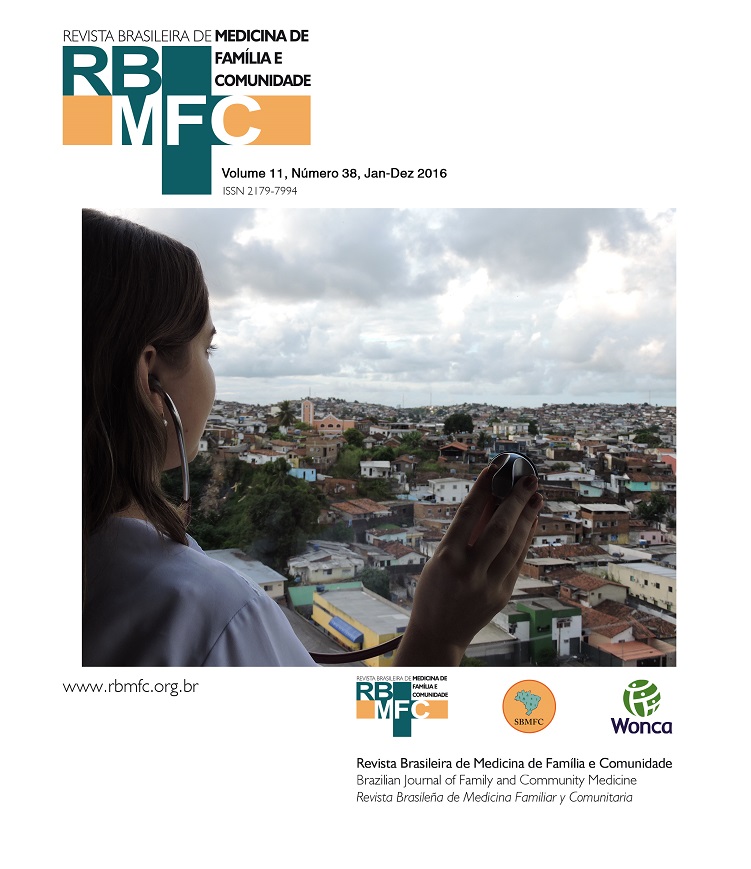Is the use of larvicides in drinking water safe?
DOI:
https://doi.org/10.5712/rbmfc11(38)1300Keywords:
Larvicides. Microcephaly. Aedes. Public Health.Abstract
Probably yes. There is no evidence to prove the safety of the use of larvicides in drinking water. However, there are few studies evaluating the effect on the population of mammals, as are the bioavailabilities and cytotoxicity reviews show that in low concentrations are safe and no genotoxic or carcinogenic effects. Larvicides evaluated and authorized for use in drinking water by the World Health Organization, intended for human consumption are: DIFLUBENZUROM, METOPRENO, NOVALUROM, Pirimifós/, PIRIPROXIFEM, ESPINOSADE, TEMEFÓS, beyond Bacillus thuringiensis israelensis (BTI). It is recommended to always use the correct dose of larvicides. Temephos is used to treat outbreaks, but should not be used in fish tanks. Approved for use in drinking water. The pyriproxyfen is an ether and there is no evidence to support that it causes damage in mammalian fetuses. BTI are recommended as larvicides for use in public health, it is a bacterium that contact with water releases toxic to the larvae of some insects. The application should be performed by trained professional. BTI has no acceptable daily intake, however the guidance of use should be 1-5mg/liter. The evaluation of chemicals of any kind should always stress the possibility of bioaccumulation. Substances that are not biodegraded are biopersistent and remain at high levels in the tissues of living things. So even if the substances are not for direct human consumption, an appraisal of its use in agriculture, river bed and pastures should be carefully evaluated.
Downloads
Metrics
References
World Health Organization. Guidelines for drinking-water quality. 4th ed. Geneva: World Health Organization; 2011. 564p.
Yapabandara AM, Curtis CF, Wickramasinghe MB, Fernando WP. Control of malaria vectors with the insect growth regulator pyriproxyfen in a gem-mining area in Sri Lanka. Acta Trop. 2001;80(3):265-76. DOI: http://dx.doi.org/10.1016/S0001-706X(01)00178-4 DOI: https://doi.org/10.1016/S0001-706X(01)00178-4
Lasneaux MV. O uso de inseticidas na saúde pública: uma crítica ao modelo de combate à dengue no Brasil e no DF [Dissertação de mestrado]. Brasília: Universidade de Brasília; 2013. 113f.
Food and Agriculture Organization of the United Nations. The Joint FAO/WHO Meeting on Pesticide Residues (JMPR) [internet]. Roma; 2015 [Citado 16 Fev 2016]. Disponível em: http://www.fao.org/agriculture/crops/thematic-sitemap/theme/pests/jmpr/en/
Brasil. Ministério da Saúde. Avaliação da eficácia de análogos de hormônio juvenil e inibidores da síntese de quitina no controle de Aedes aegypti. Brasília: Ministério da Saúde; 2005.
Abe FR. Avaliação ecotoxicológica e risco ambiental dos inseticidas utilizados no controle da larva de Aedes aegypti para Daphnia magna, Lemna minor e peixes [dissertação]. Jaboticabal (SP): Centro de Aquicultura, Universidade Estadual Paulista; 2012 [Citado 16 Fev 2016]. Disponível em: http://acervodigital.unesp.br/handle/unesp/171802
Governo do Estado de Santa Catarina. Secretaria de Estado da Saúde. Diretoria de Vigilância Epidemiológica. Orientações para uso do larvicida Pyriproxyfen 0,5G no programa de controle da dengue em Santa Catarina [internet]. Florianópolis: SES; 2014 [Citado 23 Fev 2016]. Disponível em: http://www.dive.sc.gov.br/conteudos/zoonoses/publicacoes/Orientacao%20Tecnica%20Pyriproxyfen.pdf
Koyama Y, Kimura J, Yoshioka K, Watanabe T, Seki T, Hosokawa S, et al. A six-month chronic dietary toxicity study of pyriproxyfen in rats. J Toxicol Sci. 1989;14(1):43-64. DOI: http://dx.doi.org/10.2131/jts.14.43 DOI: https://doi.org/10.2131/jts.14.43
Bayoumi AE, Pérez-Pertejo Y, Zidan HZ, Balaña-Fouce R, Ordóñez C, Ordóñez D. Cytotoxic effects of two antimolting insecticides in mammalian CHO-K1 cells. Ecotoxicol Environ Saf. 2003;55(1):19-23. PMID: 12706389 DOI: http://dx.doi.org/10.1016/S0147-6513(02)00068-4 DOI: https://doi.org/10.1016/S0147-6513(02)00068-4
Brasil. Ministério da Saúde. Fundação Nacional de Saúde. Dengue instruções para pessoal de combate ao vetor. Manual de Normas Técnicas. Brasília: Ministério da Saúde; 2001 [Citado 23 Fev 2016]. Disponível em: http://bvsms.saude.gov.br/bvs/publicacoes/funasa/man_dengue.pdf
Downloads
Published
How to Cite
Issue
Section
License
By submitting a manuscript to the RBMFC, authors retain ownership of the copyright in the article, and authorize RBMFC to publish that manuscript under the Creative Commons Attribution 4.0 license and identify itself as the vehicle of its original publication.















